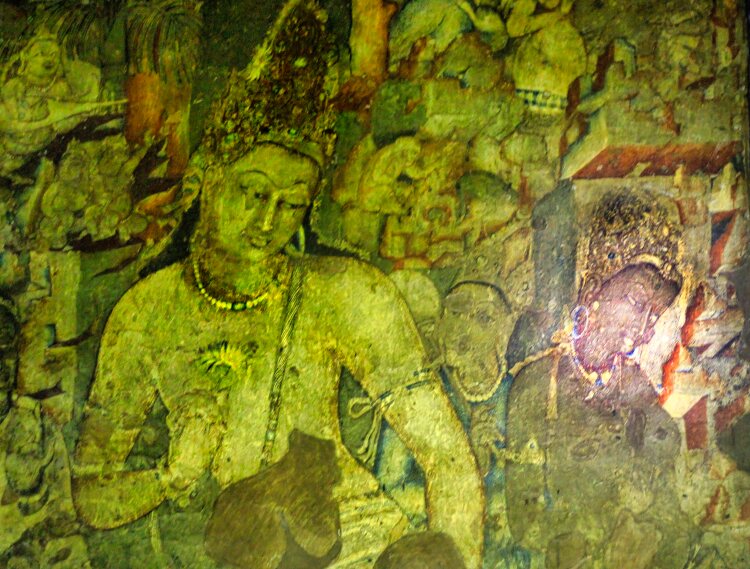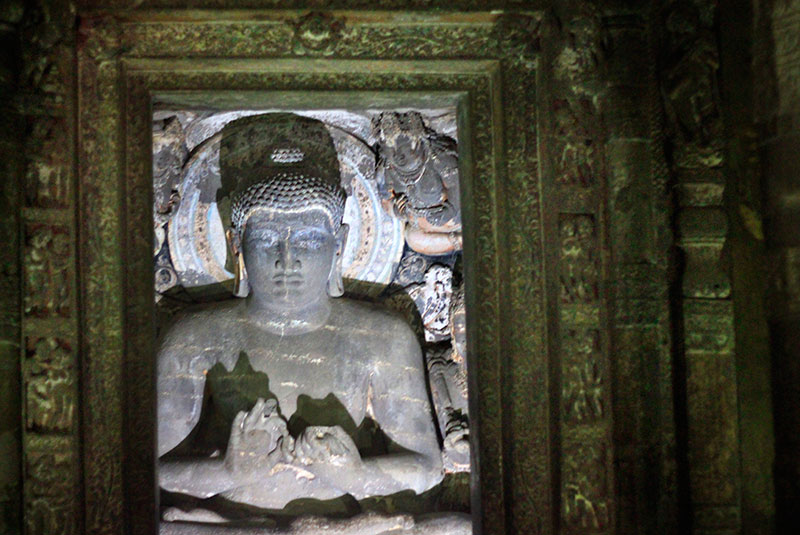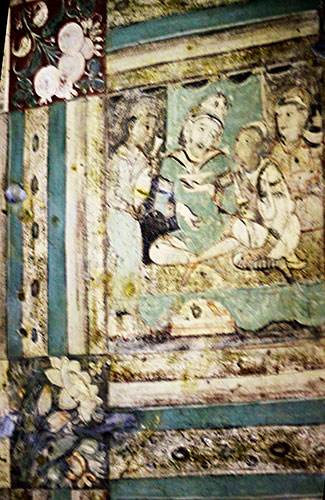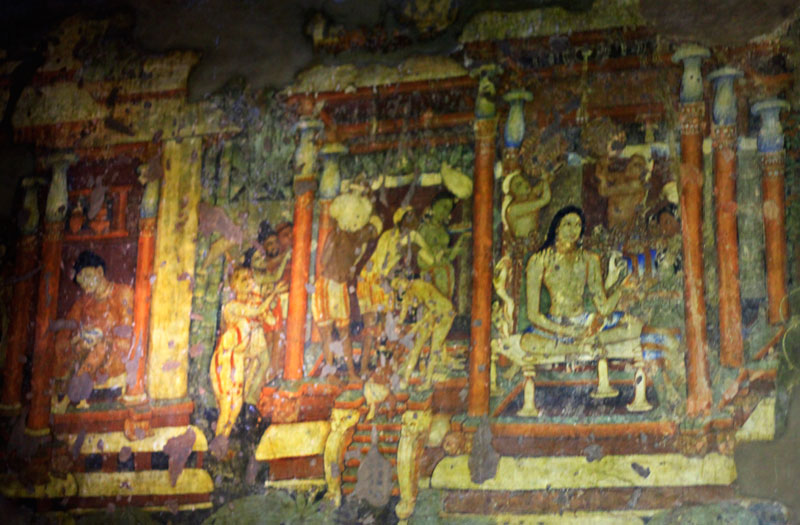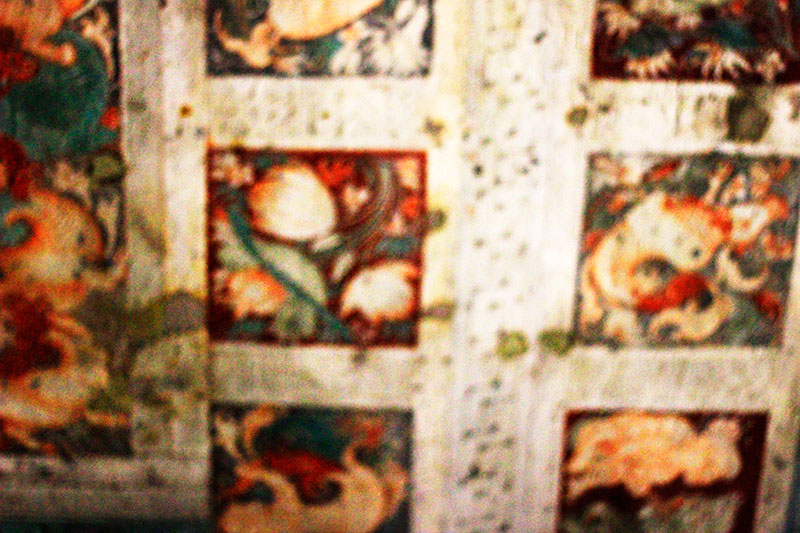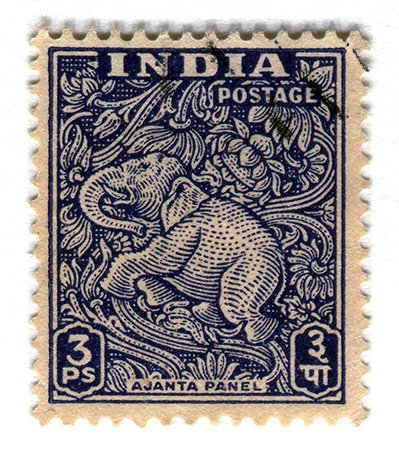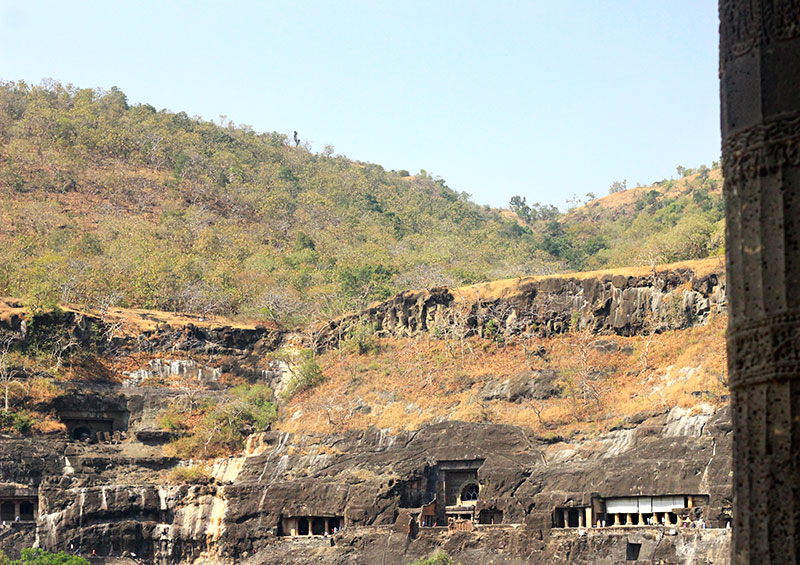Ajanta Cave 1 is one of the finest monasteries of its kind in Ajanta caves. Visitors will come across this cave first. There are 30 caves in Ajanta around a horse-shoe shaped curve in the rocks.
This is a Buddhist monastery (vihara), dating back to the fifth century. The Mahayana monastery has an open courtyard, verandah, a hall, sanctum with antechamber and cells. The large hall carries the acclaimed wall paintings, elaborate pillars and exquisite sculptures.
At one end of the hall is the sanctum sanctorum which accommodates a sculpture of seated Buddha in preaching posture or dharmachakra pravartana mudrā. He has Bodhisattvas on either side and five disciples. At the centre of the base you will see a wheel abutting two deer. The deer symbolise the deer park at Sarnath where he delivered his first sermon. The wheel represents dharma-chakra. It is one of the eight auspicious symbols of Buddhism
.
Paintings cover the entire cave, including the pillars and sculptures. The ceiling is bursting with colourful paintings.
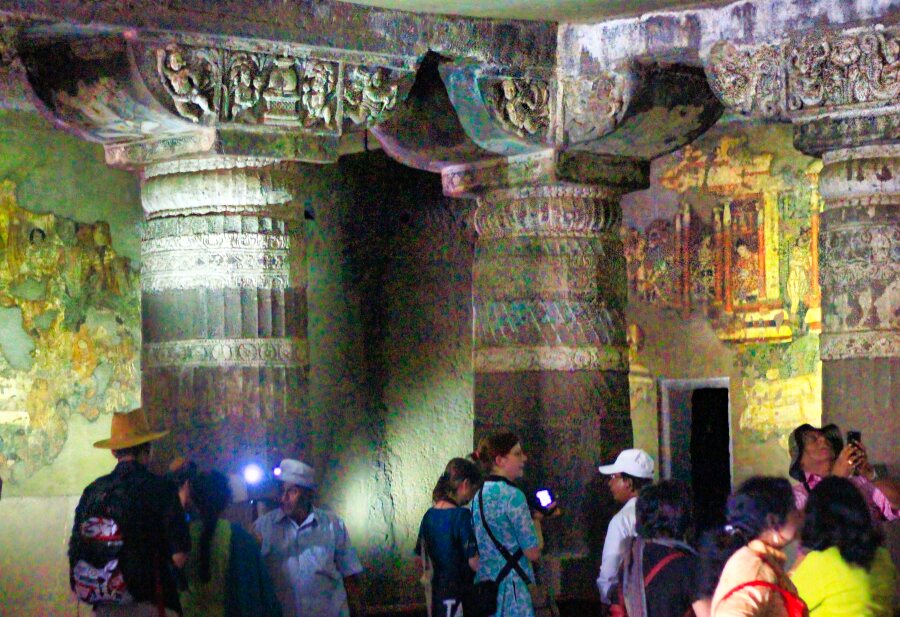
Bodhisattva Padmapani
This is perhaps the best known of the paintings in Ajanta Caves. Padmapani in Sanskrit literally translates into one who holds the lotus. Bodhisattva is one who aspires to be a Buddha. Here he is holding a blue lotus in his right hand. He wears a magnificent crown. The eyes are half-closed and looks downward. You see a chiselled nose, broad chest and a narrow waist. An Ekavali or a single pearl string adorns the neck. The pearl string contains a blue sapphire in the middle. The pearls become smaller as they go around. The design that you see is still in use.
Folklore has it that the artist would place a bucket of water, with a mirror at the bottom, at entrance to the cave. The reflected light from the mirror would light up the dark cave. The artist would then be able to work on the paintings.
Painting of Persians
The picture above shows a painting of a Persian nobleman. Of fair skin, he holds a cup in his hand, probably of Persian origin. His clothes, headgear and curtains are all in Persian style.
Prince Mahajanaka
On the left side of the Cave No 1, you can see the famous mural of Prince Mahajanaka. He was heir to the throne of Mithila and grew up in exile. Mahajanaka’s kingdom was seized by his uncle. After many years, his uncle died. Mahajanaka married his beautiful daughter Shivali and regained his kingdom. One fine day, he renounces everything despite being cajoled by Shivali and others against it. He then sets forth in search of self-realisation.
Ceiling Paintings
Look up at the ceiling and you will observe geometric designs and patterns. There are also peacocks which are adorned in intense blue paint made using powdered lapis lazuli. A decorative vegetable motif resembles the green bell pepper. Furthermore there is an animal with bull’s head whose body alters into whirling flowing lines.
One of the ceiling panels illustrates a running elephant surrounded by flowers. The elephant gallops playfully. India Post issued definitive stamps featuring the Ajanta Panel on 15 August 1949. Stamp colour is slate violet and the face value is 3 paise.
If you liked the post, you could…
Join more than 5,000 fans of UASATISH by liking us on Facebook, or follow us on Twitter and Instagram.
